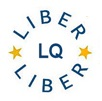The Ten Commandments revisited: the Qualities of Good Library Space
DOI:
https://doi.org/10.18352/lq.7840Abstract
An increasing diversity of imaginative new academic libraries are being constructed around the world, successfully combining exciting architectural expression, inspiring internal spaces and good functionality. Library managers must have a strong vision for the new library and this should inspire the design and the whole building process. This paper explores the key qualities of good learning space, whether in new or refurbished buildings. It is suggested that, ideally, learning space should be functional, adaptable, accessible, varied, interactive, conducive, environmentally suitable, safe and secure, efficient and suitable for information technology. New space should also have “oomph”, capturing the minds of users and the spirit of the university. These indicative issues should be discussed in the brief and throughout the planning process, and the priority given to them will depend on the mission and culture of the library. Greater attention is being given to daylight, natural ventilation, cultural artwork, noise management, security, disabled access, information skills training and provision for e-services. Planning is increasingly centred on people or the learner, emphasising the need for social, interactive and collaborative learning spaces as well as for traditional spaces for quiet study and reflection. Some libraries are joined-up with other services. The academic library is an enduring physical ‘place’, providing a blended, hybrid environment of traditional and electronic services crucial for the future of our universities and their communities.Downloads
Download data is not yet available.

Published
2006-06-20
Issue
Section
Articles
License
Copyright (c) 2006 Andrew McDonald

This work is licensed under a Creative Commons Attribution 4.0 International License.
How to Cite
McDonald, A. (2006). The Ten Commandments revisited: the Qualities of Good Library Space. LIBER Quarterly: The Journal of the Association of European Research Libraries, 16(2). https://doi.org/10.18352/lq.7840





